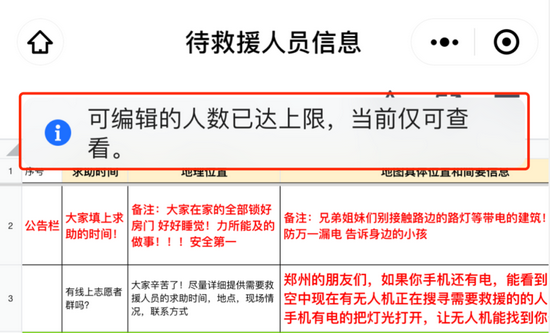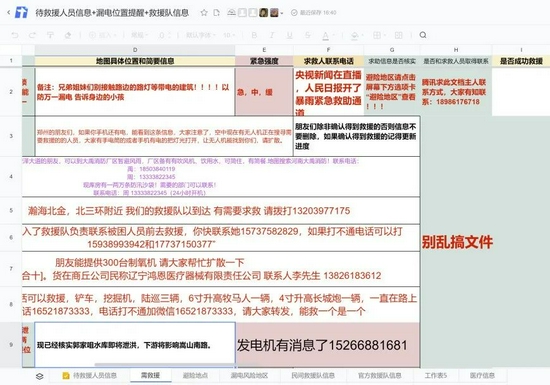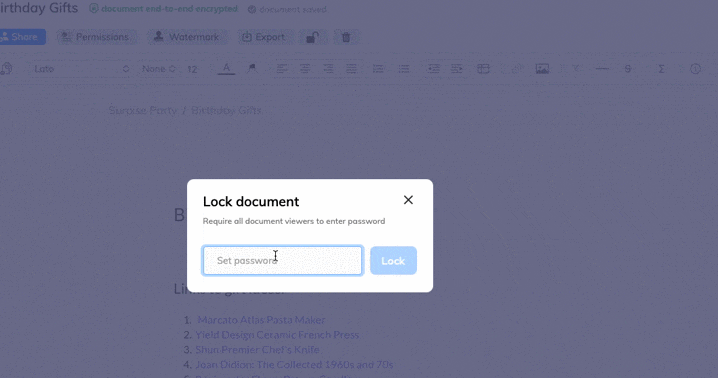Last year, a rescue document about the torrential rain in Zhengzhou attracted attention. This document records information such as people to be rescued, available support materials, and places to avoid danger. There are more than 2.5 million visits, and hundreds of versions have been updated. It took only 21 hours from the first line of text to the rescue tool with 9 functional sheets on the independent homepage. This has served as a good communication medium for disaster areas where transmission routes have been blocked, and has saved many people.
In such a short period of time, we can mobilize the strength of the whole country across organizations and regions to complete the editing of rescue information. The "synergy" effect of Tencent's documents is indispensable.
Collaborative office tools are not a new thing, but this rescue activity has made everyone examine its importance again. Because it supports multi-person and multi-terminal efficient collaboration and sharing, it makes it possible to edit files across organizations and regions.
But at the same time, this incident also exposed the problems existing in the current multi-person collaboration. For example, too many visitors and limited data storage capacity make it impossible to edit online at the same time.

In addition, in order to facilitate more people to fill in, the permission setting of this document is "everyone can view and edit", but this also means that the information is at risk of being viewed or even tampered with at will. For example, too much information was edited at that time, and responsible netizens would prompt in large characters: "Don't mess with the files!!!!"

And Manto, the creator of the document, said in an interview that he "hopes that the private information in the document can be erased or covered up after the flood situation is over."
So how can collaborative tools be effective while focusing on data security and privacy protection? Perhaps decentralized collaboration tools can give the answer.
Privacy first from the start
Skiff is a decentralized collaborative office tool. Has document authoring and sharing features similar to Google Docs. Skiff uses E2EE (End-to-End Encryption) as a core design principle for working online, which is used for messaging, writing, collaboration and communication. Skiff servers only store the encrypted version of the data and cannot decipher it.
Every time a user logs into Skiff, the browser generates a key that is used to decrypt the account data that is sent to your device by Skiff's servers after a successful login, and it all happens locally. The keys derived from it are never sent over any network and stored in Skiff's servers.
Specific operation process: When A edits a document, it will be encrypted with a symmetric encryption key shared only between him and B (the key will not be shared with Skiff), and B receives A's encrypted edit After that, verification and decryption are performed, which are then incorporated into the document. Throughout the process, data will not be leaked to any central technology provider. This facilitates authentication and protection of personal and sensitive information.
Additionally, Skiff has a limited access by design. When there are shared collaborators, you can restrict their further access by setting expiration controls.
If some sensitive content in the document is not convenient to disclose, you can also protect it by setting a password lock. This allows the creator of the post to restrict access to the content even if the link is shared publicly.

In terms of data storage, Skiff announced an integration with IPFS. On IPFS, data is replicated and distributed across a network of participating computers that work together to ensure the integrity and durability of all data stored on the network. So using IPFS, you can permanently access user data without relying on a central provider.
Web3 login method
As Web3 continues to penetrate the Internet, MetaMask has become a new form of identity login. In December 2021, Skiff also began to support MetaMask wallet login, allowing users to use existing key pairs (Ethereum addresses) to access end-to-end encrypted documents and data on Skiff.
Then, in January of this year, Skiff made it possible to use Ethereum Name Service (ENS) names to simplify usernames on Skiff.

On March 31, Skiff announced the completion of a US$10.5 million Series A financing led by Sequoia Capital. It is worth noting that Sequoia Capital participated in leading the US$4.2 million seed round of Skiff in May last year, and the fund also included a group of angel investors with deep expertise in the field of privacy and decentralization: John Lilly, former CEO of Mozilla , former Coinbase CTO Balaji Srinivasan, TCG crypto investor Gaby Goldberg, and Albert Ni from Dropbox and the Ethereum Foundation.
Currently, Skiff is in the early stages and already supports browser, iOS and Android versions. According to usage scenarios and functions, it is divided into personal and team versions, and each version includes free and paid options, which are differentiated in terms of functions and storage capacity.

Additionally, Skiff has partnered with Coinbase Commerce to allow users to pay for Skiff with cryptocurrencies.
There are more and more usage scenarios for collaborative documents. Especially during the epidemic, home office has become the mainstream. This form also simplifies the process of people's online office, and has become a common demand of enterprises and individuals. It is believed that Skiff, which combines blockchain technology, can be captured by more users, and at the same time make decentralized collaboration tools a new market hotspot.